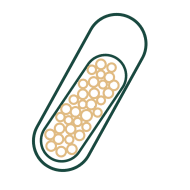
Do you have questions?
Need additional advice? No problem! Ask our team of experts. We'd love to hear from you.

Collagen has become a hot topic in recent years, and for good reason. This protein plays an important role in maintaining radiant skin and flexible joints, depending on the type of collagen. But did you know that our bodies start producing less collagen as early as our mid-twenties? With the right nutrition and support, you can slow down this process and give your collagen levels a boost.
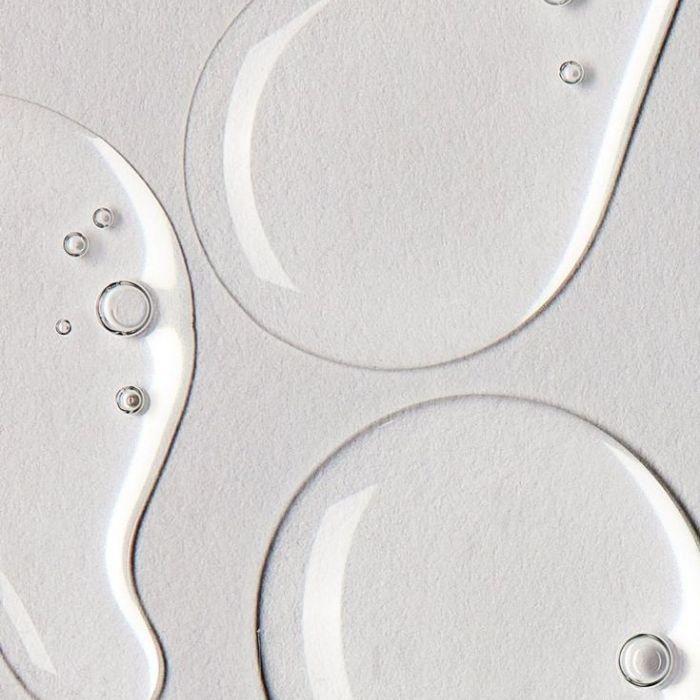
Collagen is a structural protein found in connective tissue. It improves skin structure and has an anti-aging effect on our skin. It can also have a positive impact on our bones, muscles, tendons, and joints. You can think of it as the glue that holds everything together.
Although the body naturally produces collagen, this production decreases significantly with age. This strong decline starts as early as the mid-twenties. Typical signs of aging then begin to appear, such as less firm and thinner skin, wrinkles, and stiffer joints. Fortunately, there are plenty of ways to support the body's natural collagen production.
Tip: Read our blog "What is collagen?"
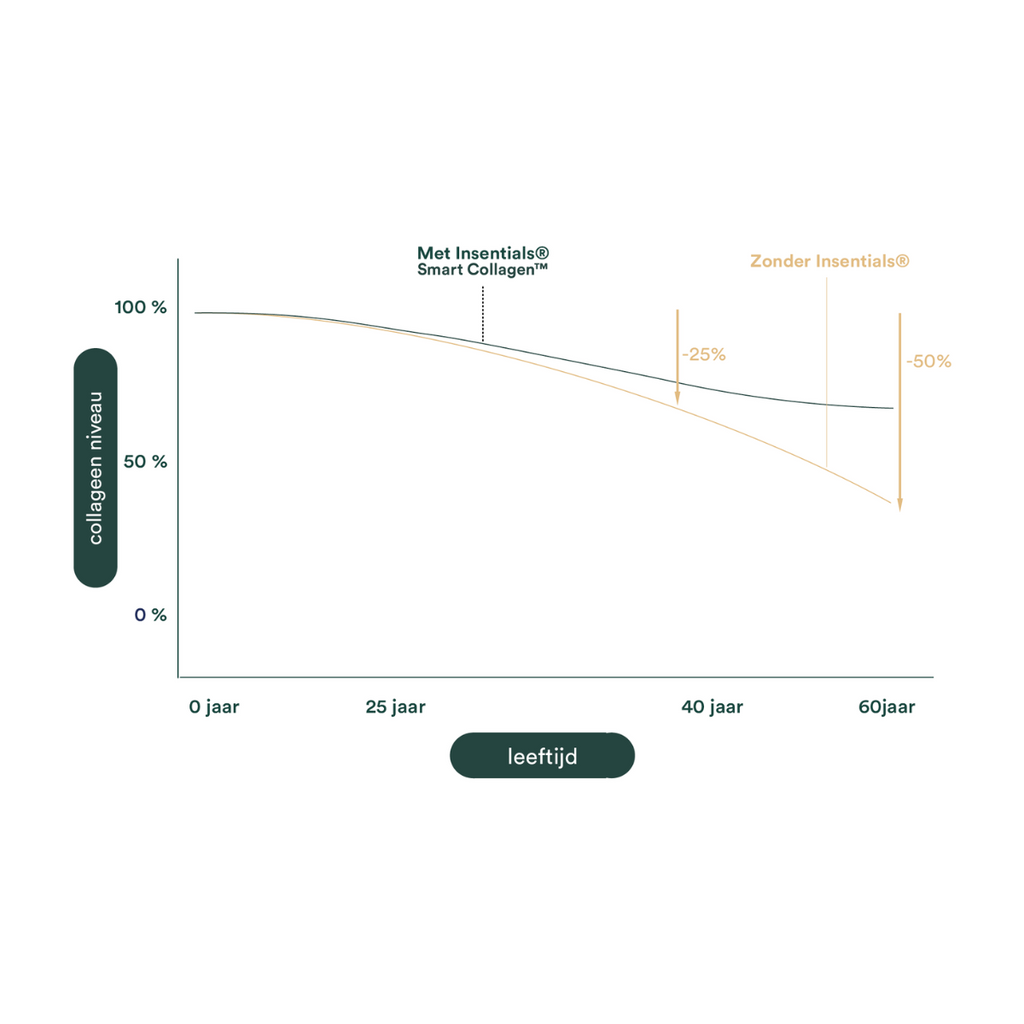
Starting at the age of 25, subtle changes begin to occur in the body. Collagen production slows down. Initially, you may not notice this, but over time, it impacts the skin and joints. Research has shown that the amount and quality of collagen in the skin decrease by as much as 1% per year. This contributes to visible signs of aging, such as wrinkles and loss of elasticity (Moragas et al., 1998) [1].
Collagen is a protein that is naturally broken down and rebuilt continuously. However, as we age, this process becomes unbalanced. The breakdown happens faster than the production. The effects of this decline are most visible in the skin. Collagen also plays a crucial role in tendons, bones, and joints. A deficiency can lead to stiffness, reduced mobility, and an increased risk of injuries.
Lifestyle also plays a major role. Factors such as exposure to UV radiation, smoking, and a diet high in sugar contribute to collagen depletion. That’s why it’s important to be mindful of how to support your collagen levels from a young age. Healthy nutrition, proper hydration, and the right collagen supplements can help counteract some of the effects of this natural decline.
Through nutrition, you can not only replenish your natural collagen supply but also stimulate its production. We provide an overview of several foods that are rich in collagen or support its production, backed by scientific findings.
Bone broth is one of the best-known sources of collagen. By simmering bones and connective tissue for a long time, collagen and gelatin are released, along with minerals like calcium and magnesium. Gelatin is a digestible form of collagen that is easily absorbed by the body (Shoulders & Raines, 2010) [2].
Chicken, especially chicken skin, is rich in collagen. The collagen in chicken is particularly beneficial for joints because it contains type II collagen, which supports cartilage (Santana et al., 2020) [3].
Fish and shellfish, especially their connective tissue and skin, contain high concentrations of type I collagen. This type is most abundant in our skin and contributes to elasticity and firmness.
Eggshells and membranes are rich in collagen components, including glycine and proline. These amino acids are important for collagen production in the body (Aguirre-Cruz et al., 2020) [5].
Strawberries, blueberries, and blackberries are rich in vitamin C. They also contain antioxidants that protect collagen from damage caused by free radicals. They play an important role in maintaining healthy connective tissue (USDA, 2024) [11].
Garlic is rich in sulfur, a mineral that supports collagen production and protects against breakdown. It also contains taurine, an amino acid that helps repair damaged collagen.
Leafy greens like spinach and kale are rich in chlorophyll. Studies show that chlorophyll can stimulate the production of procollagen, the precursor to collagen (Cho et al., 2006) [6].
Nuts such as almonds and seeds like sunflower seeds are rich in zinc and copper. These minerals support enzymatic processes that are essential for collagen synthesis (USDA, 2024) [11].
Tomatoes are rich in lycopene, a powerful antioxidant that helps prevent collagen breakdown. It also protects against damage caused by UV radiation and free radicals (Rinnerthaler et al., 2015) [7].
Avocados are rich in vitamin E. Vitamin E helps protect collagen structures from oxidative stress (NHS, 2020) [8].
Soy products like tofu and soy milk contain genistein, an isoflavone that can stimulate collagen production. They also have antioxidant properties that slow skin aging (Solway et al., 2020).
Citrus fruits do not contain collagen themselves, but they are rich in vitamin C. This is an important cofactor for collagen production. It helps convert proline into hydroxyproline, an amino acid essential for collagen stability (NHS, 2020) [8].
Red peppers are also full of vitamin C. They contain capsaicin, a compound that reduces inflammation and slows collagen loss (USDA, 2024) [11].
Beans are packed with proteins and amino acids necessary for collagen production. They also contain copper, which helps stabilize collagen fibers (Shoulders & Raines, 2010) [2].
Oysters are one of the best sources of zinc, a mineral that supports collagen production and helps repair damaged tissue (Santana et al., 2020) [3].
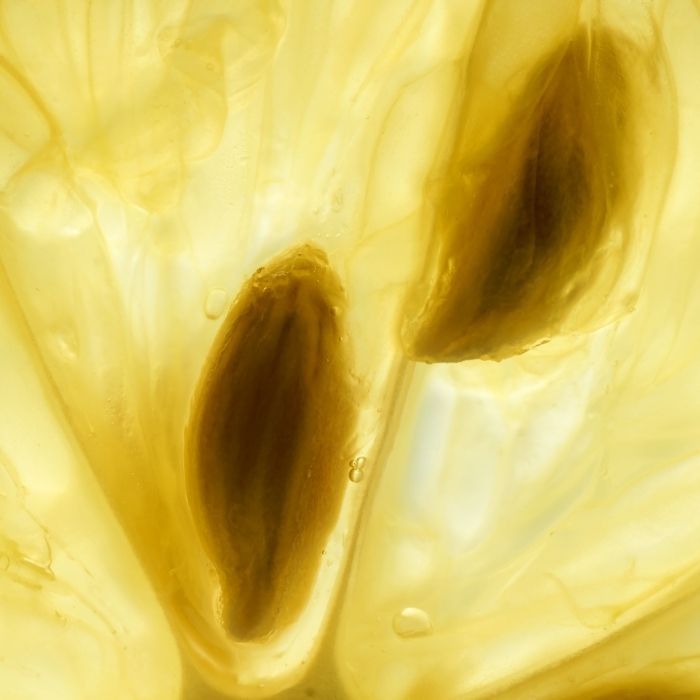
Several foods mentioned earlier highlight the importance of vitamin C. It's clear that this vitamin plays a crucial role in collagen production. To effectively produce this protein, a sufficient intake of vitamin C is essential.
Vitamin C acts as a cofactor during collagen synthesis, supporting the enzymes prolyl and lysyl hydroxylase. Without this hydroxylation process, stable and functional collagen cannot be formed. Ultimately, this would weaken the quality and repair capacity of connective tissue. This process is therefore vital for the production of collagen fibers (Miller et al., 2014) [9].
It's no surprise that a vitamin C deficiency can have significant consequences for collagen synthesis. In such cases, the body may produce little to no stable collagen (Jacob & Sotoudeh, 2002) [10].
In summary, while vitamin C is primarily known as an immune booster, it's clear that it offers much more than that (Miller et al., 2014) [9].
Ensuring sufficient intake of vitamin C through diet or supplementation is crucial for supporting collagen synthesis. This can help maintain healthy and youthful-looking skin as you age.
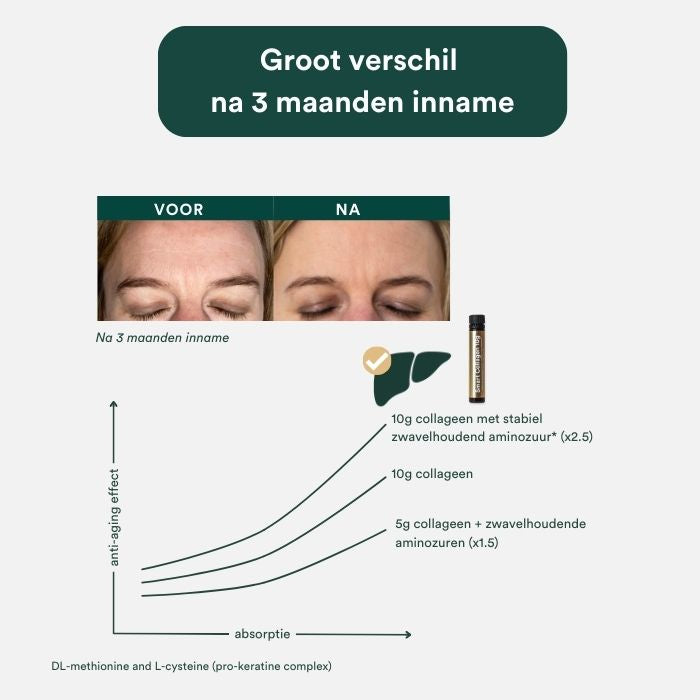
As we age, collagen production decreases, which becomes visible in the form of fine lines, wrinkles, and less elastic skin. While nutrition can help support collagen production, it's not always sufficient. This is where the Insentials Smart Collagen Shot provides an effective solution.
With a unique formula featuring CollaXine™, vitamin C, and the innovative Keraboost™ technology, this shot is specifically designed to supply the body with the building blocks needed for collagen production. Vitamin C plays a vital role in collagen synthesis, supporting skin structure and firmness.
Additionally, the Smart Collagen Shot contains pre-keratin in the form of L-cysteine and DL-methionine. These amino acids are essential for the formation of keratin, a key protein for strong hair and healthy nails. This supplement combination not only supports the skin but also contributes to visibly stronger hair and firmer nails.

The Insentials Smart Collagen Shot boasts an absorption rate of up to 91%, allowing your body to fully benefit from its active ingredients. It provides a quick and practical way to support your collagen levels daily, without relying on foods that are often difficult to consume in large quantities.
Additionally, the Insentials Smart Collagen Shots contain no liver-straining sugars or sweeteners.
Do you want radiant skin, stronger hair, and healthy nails? The Insentials Smart Collagen Shot is designed to help you achieve these goals. A simple addition to your daily routine can make a big difference in how you look and feel.
Sources:
[1] Moragas, A., García-Bonafé, M., Sans, M., Torán, N., Huguet, P., & Martín-Plata, C. (1998). Image analysis of dermal collagen changes during skin aging. Analytical and Quantitative Cytology and Histology, 20(6), 493–499.
[2] Shoulders MD, Raines RT. Collagen Structure and Stability. Annu Rev Biochem [Internet]. 2010 Mar 29; 78:929-958. Available from: https://www.ncbi.nlm.nih.gov/pmc/articles/PMC2846778/
[3] Santana JCC et al. Valorization of Chicken Feet By-Product of the Poultry Industry: High Qualities of Gelatin and Biofilm from Extraction of Collagen. Polymers (Basel) [Internet]. 2020 Mar 2; 12(3):529. Available from: https://www.ncbi.nlm.nih.gov/pmc/articles/PMC7182801/
[4] Pu SY et al. Effects of Oral Collagen for Skin Anti-Aging: A Systematic Review and Meta-Analysis. Nutrients [Internet]. 2023 Apr 26; 15(9):2080. Available from: https://www.ncbi.nlm.nih.gov/pmc/articles/PMC10180699/
[5] Aguirre-Cruz G et al. Collagen Hydrolysates for Skin Protection: Oral Administration and Topical Formulation. Antioxidants [Internet]. 2020 Feb 22; 9(2):181. Available from: https://www.mdpi.com/2076-3921/9/2/181
[6] Cho S et al. Drink Containing Chlorophyll Extracts Improves Signs of Photoaging and Increases Type 1 Procollagen in Human Skin in Vivo. [Internet]. 2006 Apr 13. Available from: https://oldkmbase.medric.or.kr/KMID/0604220060130040111
[7] Rinnerthaler M et al. Oxidative Stress in Aging Human Skin. Biomolecules [Internet]. 2015 Jun; 5(2):545-589. Available from: https://www.ncbi.nlm.nih.gov/pmc/articles/PMC4496685/
[8] NHS. Vitamin C. NHS [Internet]. Reviewed 2020 Aug 3. Available from: https://www.nhs.uk/conditions/vitamins-and-minerals/vitamin-c/
[9] Miller, S. J., & Dunn, M. W. (2014). Collagen biosynthesis and its implications for the treatment of connective tissue disorders. Journal of Dermatological Treatment, 25(6), 476–483. https://pubmed.ncbi.nlm.nih.gov/25437957/
[10] Jacob, R. A., & Sotoudeh, G. (2002). Vitamin C function and status in chronic disease. Nutrients, 118(8), 1-9. https://pubmed.ncbi.nlm.nih.gov/12407674/
[11] U.S. Department of Agriculture. (2024). USDA National Nutrient Database for Standard Reference. Retrieved from https://www.usda.gov